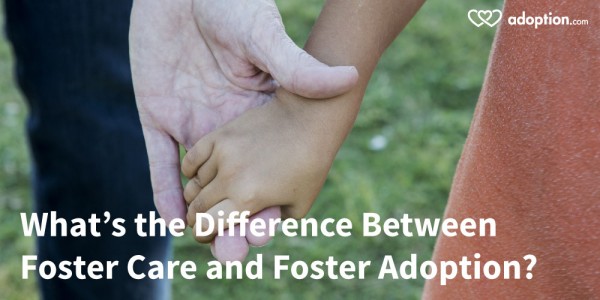I’m not sure why, but one of the most confusing concepts to me before I entered the world of foster care was the difference between regular foster care and foster adoption (sometimes called fost-adopt for short).
At first, I thought that if you were open to adopting a child through foster care, a fost-adopt program would be the way to go. I figured that the difference must be that “regular” foster parents didn’t ever plan to adopt their foster children and just wanted to help children out on their way to permanent homes.
Since my husband and I were hoping to grow our family as we fostered, we assumed fost-adopt would be our path. Even after attending a couple of different orientation meetings while looking into foster care, I was still confused. Maybe it’s only me, but just in case it isn’t, I wanted to share what I have learned about the difference during my time as a foster parent.
Let’s begin with a few foster care basics. A foster parent is licensed to accept placement of foster children of the ages and situations specified by that foster parent. This process is usually dependent on the state in which you live. Every state has different laws you must abide by.
When a child is removed from his or her home due to neglect or abuse, the case plan goal will generally start out as “reunification with family of origin.” If parents decide to work toward having their children returned to them, reunification will generally occur if the court decides that is best for the child(ren).
In the meantime, the children will be placed in one of a few different situations—a foster home, a kinship placement, a group home, or other alternative placement. However, in cases where a judge finds the parent(s) unfit and decides to sever parental rights, the professionals involved in the case will have identified an adoptive home. In some cases, it will be determined that the best permanent home for the child(ren) is with the foster family or relative who is already caring for them and all will prepare for an adoption to take place. In other cases, a child may be adopted by a different foster family.
What I didn’t understand for a long time was that fost-adopt parents have children placed with them who are already, or soon will most likely be, legally available for adoption. As a result, there may be less perceived risk on the part of the fost-adopt family. These families are open to adopting children who are becoming available for adoption.
One point that was often driven home during our foster parent training courses was that we needed to make sure we were being honest with ourselves about what we were best prepared for as a family–what our strengths were, as well as what needs we might have. We thought a lot about what we could offer as well as what limitations we might have. After considering our options and also our strengths and needs as a family, we decided that the “regular” foster care path was the right one for us.
At the time, we had a fairly young family and our kids were pretty close in age. We recognized that our children all seemed to do best with babies and young toddlers. They seemed to find them less threatening than kids closer to their own ages. We had learned that in order for a child to be free for adoption, they generally would be older because they would have already been in foster care for a while, even if coming into care as a baby.
We also had discussed with our children that some kids need a safe family to be a part of for a while but would eventually return to their own families, but that if we were the best family for a child then we may be able to adopt them. They were excited to help kids in need of a safe home, even if it was temporary. After years of incorrect assumptions about foster care vs. fost-adopt, we made the decision that was right for our family and felt very peaceful about our choice.
Are you a foster parent or are you considering fostering or fost-adoption? What considerations have you made to determine what the best route for you is as a foster parent? What have you learned about yourself through the process?

